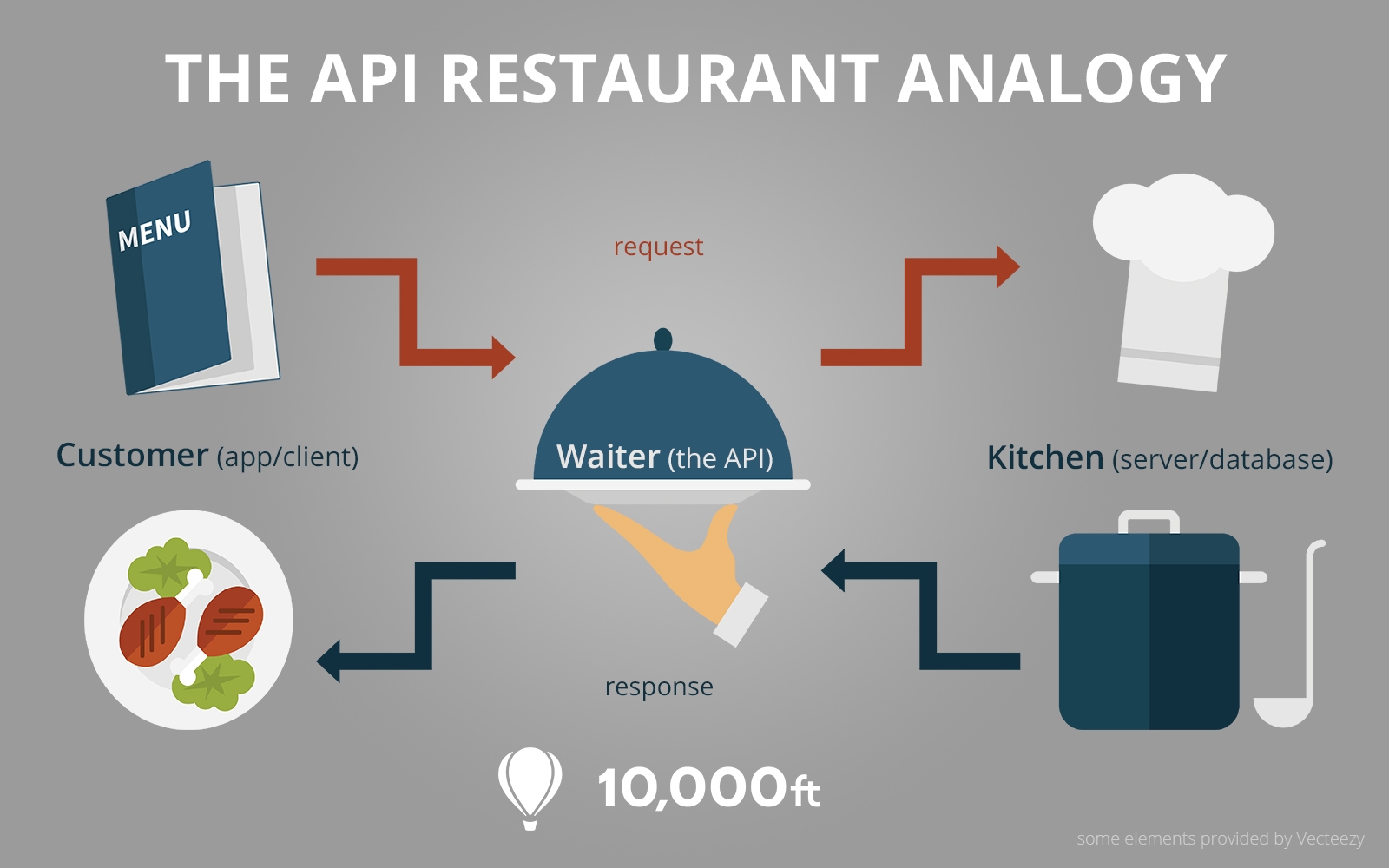APIs, what are they?
The term API is an acronym, and it stands for Application Programming Interface. An API lists a bunch of operations that developers can use, along with a description of what they do.
Think of an API like a menu in a restaurant. The menu provides a list of dishes you can order, along with a description of each dish. When you specify what menu items you want, the restaurant’s kitchen does the work and provides you with some finished dishes. You don’t know exactly how the restaurant prepares that food, and you don’t really need to.

If you’ve ever seen a Google Maps embedded on a website, that website is using the Google Maps API to embed that map. Google exposes APIs like this to web developers, who can then use the APIs to embed content on their website. If APIs like this didn’t exist, developers might have to create their own maps and provide their own map data just to put a little interactive map on a website.
Using well-designed APIs lets us compose our software of logically distinct components. These components can be maintained in relative isolation, and the functionality behind them can be reused between different applications.
JSON
JavaScript Object Notation (JSON) is a standard text-based format for representing structured data based on JavaScript object syntax. It is commonly used for transmitting data in web applications.
JSON supports the following data types:
string
number
object (JSON object)
array
boolean
null
References
JSON validator: https://jsonlint.com/
Last updated
Was this helpful?